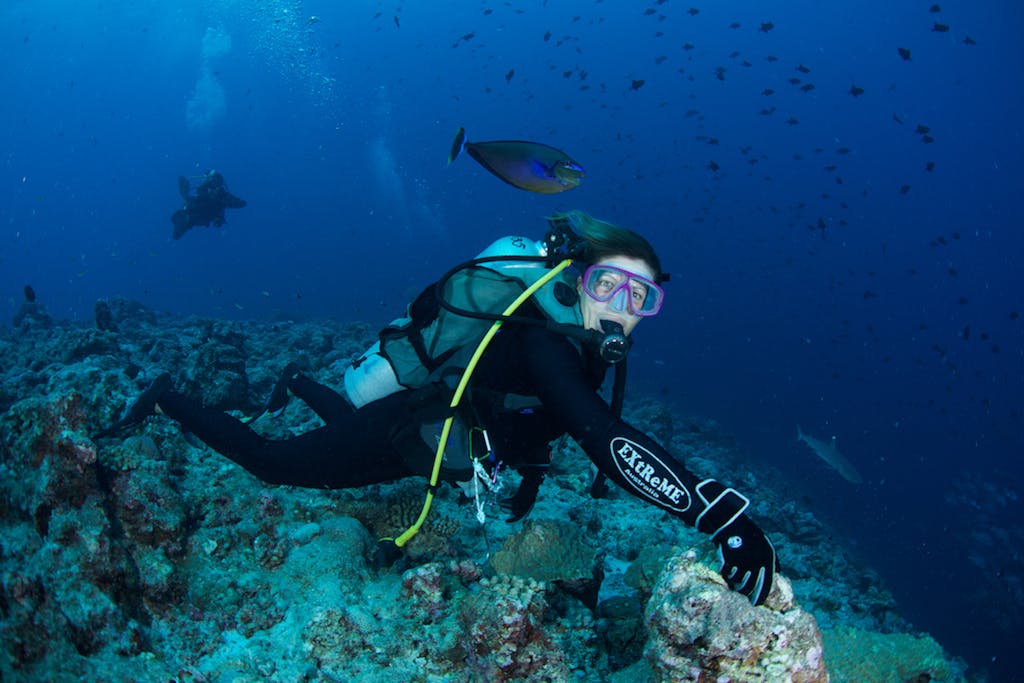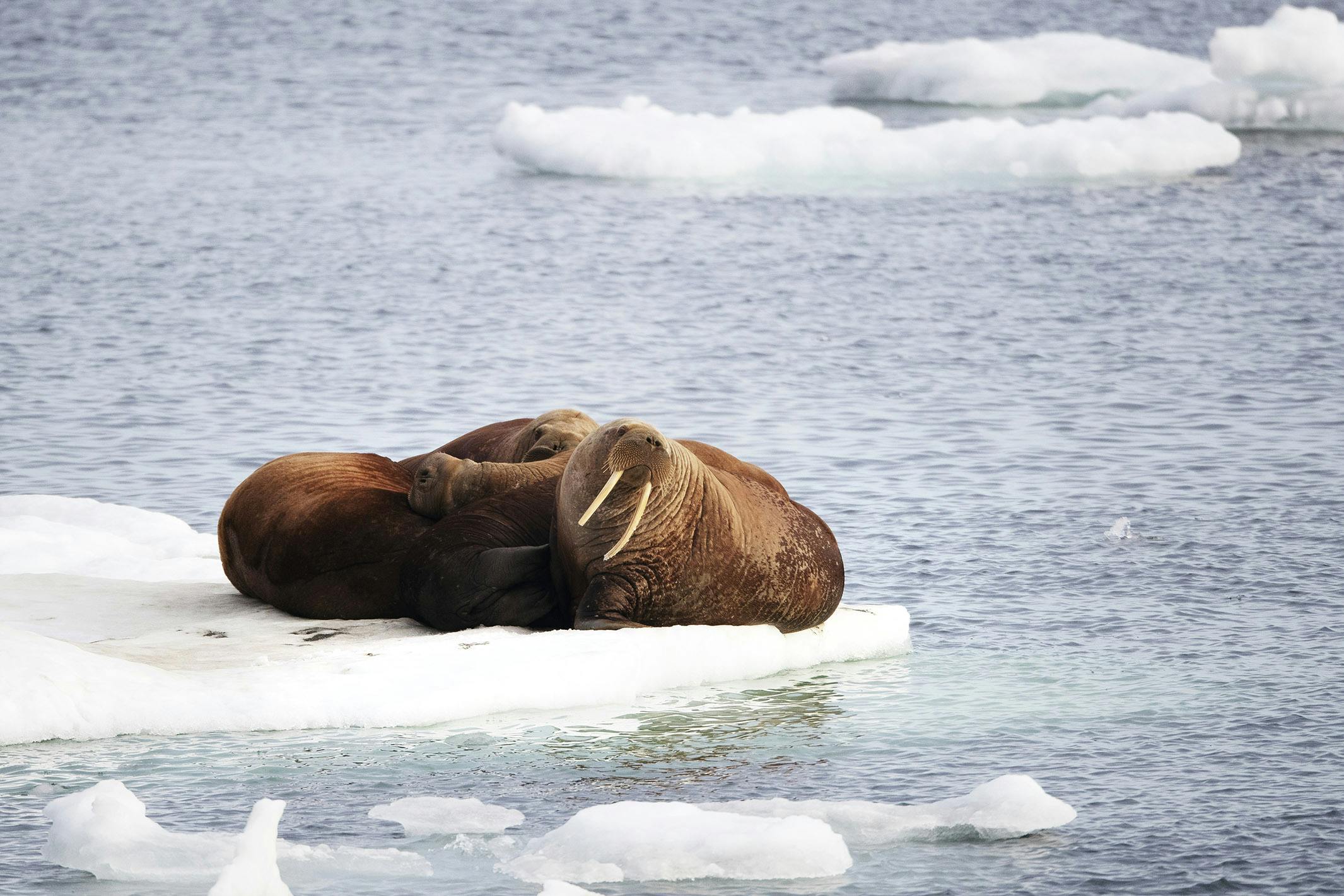Let’s Get Enriched: The Magnificent Walrus of the Arctic
In Silversea’s “Let’s Get Enriched” series, you don’t have to be onboard to feel your mind expanding into fascinating new territories as expedition and enrichment team members offer short takes on their favorite topics. Tune in as our experts share as much great info about their specialties as they do about the passions that fuel them.
“There’s nothing else in the world that looks like a walrus,” marine biologist Robin Aiello tells us while reminiscing about the first time she encountered these peerless pinnipeds on an Arctic expedition with Silversea. She admits that the first impression from afar wasn’t too flattering: “I spotted a couple of dark brown lumps on the ice, that really looked more like old rusty oil drums.” Nevertheless, the sheer size, magnificent ivory tusks and fascinating evolutionary adaptation of the mighty walrus has made them one of Aiello’s all-time favorite creatures.
What’s So Intriguing About the Magnificent Walrus of the Arctic?
- Although Robin’s lecture focuses on Atlantic walrus, which number some 25,000 and live in the Arctic, there’s also the Pacific species. The World Wildlife Foundation says there are approximately 200,000 of the Pacific variety, living off of northwest Alaska.

- Walrus live as long as 40 years — and mothers carry babies for some 15 months.
- Walrus, both male and female, have large tusks and use them to haul themselves from the sea to the ice as well as self-defense. Males, primarily, also use their tusks to fight with other males during breeding seasons.
- Their diet? Primarily, walrus eat clams, soft shell crabs, sea cucumbers, oysters and worms.
- Walrus are among the stars of Silversea expedition cruises in the Arctic, which also include vast bird colonies, whales, polar bears and dramatic landscapes that range from frozen tundra to towering icebergs. Cruises primarily visit Greenland, Iceland, Arctic Canada, and Svalbard.
“One of my all-time favorite creatures, found only in the Arctic, is the amazing, magnificent walrus. There’s nothing else in the world that looks like a walrus.”
Robin Aiello
A life at sea
A marine biologist, Robin Aiello always dreamed of becoming an eye surgeon, following in the steps of her grandfather, father and brother. That is, she tells us, until she flunked her first physics quiz at Harvard University. “I decided to look for something else.”
That new career? An accidental drop-by at a lecture by famed evolutionist Stephen Jay Gould caught her eye — and the story of adaptation, of the stories behind animal species that adapt to live in some of the world’s harshest environments, became her passion. She graduated from Harvard University with highest honors in Evolutionary Biology and Marine Biology.

As a marine biologist, Aiello’s worked in numerous ways, from living underwater for two weeks, some 65 feet deep in the Caribbean, to living in a tent in Antarctica, diving daily through the 16-foot-thick ice of the Ross Sea. For more than 20 years, she studied coral reef ecology in Australia’s Great Barrier Reef and throughout the South Pacific. And she owned her own environmental management business, working with government agencies to establish best practices.
In recognition of her accomplishments, Aiello has been honored with the Australian EcoWarrior Award and the International Earth Ambassador Award.
